With some Hackintosh hints.
AirDrop is a new feature in OS Lion which allows easy ‘drag and drop’ transfer of files between Macs (not iPads or iPhones) separated no more than 20 feet or so. What it lacks in range it more than makes up for in ease of use.
The ability to network Macs has been there for years – use MobileMe, switch on Back to my Mac in SystemPreferences->MobileMe and Finder will display all other Macs on your network configured in a like manner. I use this often for transferring files but it’s not especially fast, owing to lousy American broadband speeds. A big file – like a movie – is stll best moved using SneakerNet. Put it on a USB flash drive and walk it over.
So AirDrop caught my attention and I duly tried it out between one of my Hacksters (the HP10 with the i3 CPU) and my MacBook Air after HP10’s creator, FU Steve, had worked his magic (more below). A 13mB G1 RAW picture file took 25 seconds to make it across and was placed in the ‘Downloads’ folder. Using traditional networking (which is not as range limited the way AirDrop is, requiring only a shared wifi connection) it went over in 40 seconds, so AirDrop is faster if your Macs are in range. The main appeal is how easy it is to use. You do not have to login to the other Mac or remember its username and passwords and you save a few seconds required for the traditional login to ‘take’.
If Airdrop is available on your Mac it will appear in Finder thus:
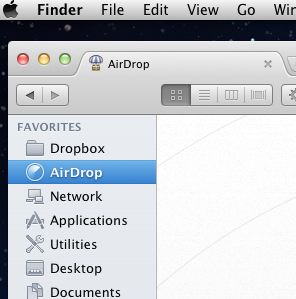
Here it is on the MacBook Air:
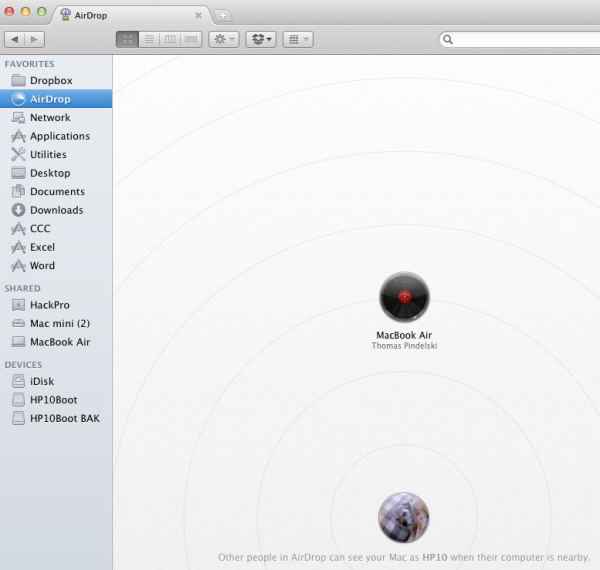
Here’s the HP10 Hackintosh asking if I want to send files to the MBA, having drag-and-dropped them onto the MBA’s icon (the HAL9000 from ‘2001 A Space Odyssey’!) in HP10’s Finder:
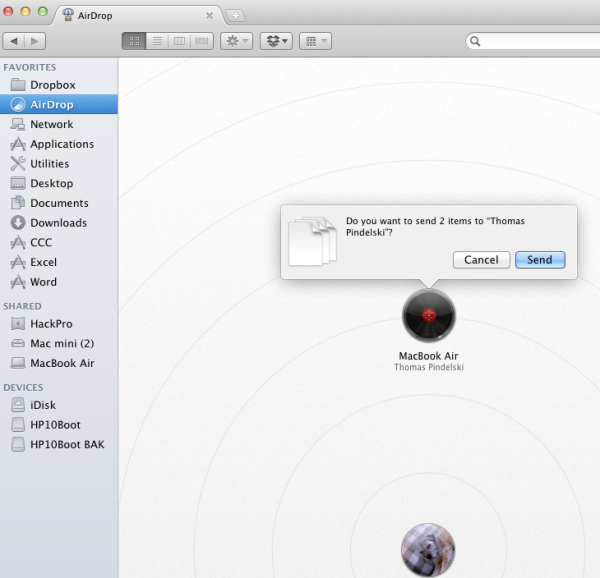
The MBA meanwhile flashes a similar screen asking for approval of receipt.
It’s simple, intuitive and fast, and very handy for sending snaps around to anyone’s Mac within range. Unlike the networking alternative, there is no need for the recipient to be on your network. Very clever.
Use with a Hackintosh and with older Macs:
The Hackintosh fora are abuzz with AirDrop not working on various Hacksters. They do not, however, have access to ace Hackintosh builder FU Steve, who writes the remainder of this piece.
When Apple introuduced AirDrop it did owners of older (not much older) Macs a disservice. This handy tool will not work with Macs more than a couple of generations old. The reason is that the technology is very hardware specific, depending on the use of the latest Broadcom or Atheros wireless cards in the Macs if AirDrop is to work. These only exist in recent Macs, so it’s not just the Hackintosh community which is missing AirDrop.
While Thomas’s MacBookAir (late-2010) supports AirDrop, neither of his HackPros supports it. Nor does his MacMini (mid-2010). His HP1 uses an internal PCI-e TPLink 802-11n 2.4gHz wifi card with an older Atheros chip and the AtherosFix kext to make OS X recognize the card as an Airport one, and display it in the menu bar (fan display) in the usual way. The other machine, the brand new HP10 uses an aftermarket USB 802-11n 2.4gHz external wireless dongle and Ralink software to access broadband wirelessly. The wireless technology in both these machines is too old to support Airdrop.
So for the Hackintoshes there were two alternatives. One was to buy a used current Apple Airport mini-PCIe card and install it in the machines using a PCI-e to MiniPCI-e adapter card in an available PCI-e internal slot. The problem is that current Airport cards sell on eTheft/eBay for $100. Ridiculous.
The second approach was to figure out the model of the chip used in the current Airport card and buy the MiniPCI-e card with the orignal manufacturer’s imprint, thus avoiding the Apple premium. Sure enough, one that works is the Broadcom BCM94322MC Mini PCI-e Card 487330-001 which you can search out on the web or on eBay. Be very specific about getting exactly this card, right down to the numerical suffix in the previous sentence. $20 shipped. Many older Macs use the Broadcom BCM94321MC card (the designation is clearly visible on the card) which does not work – I know because I tested mine.
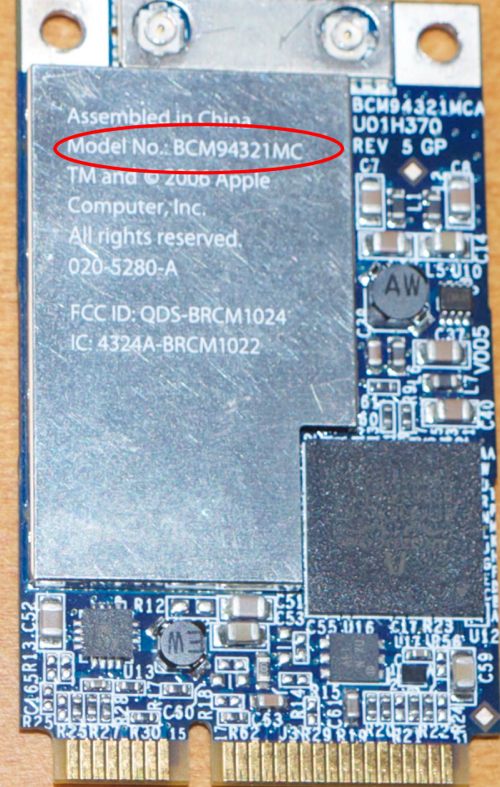
The older Broadcom BCM94321MC card – AirDrop will not work with this card installed.
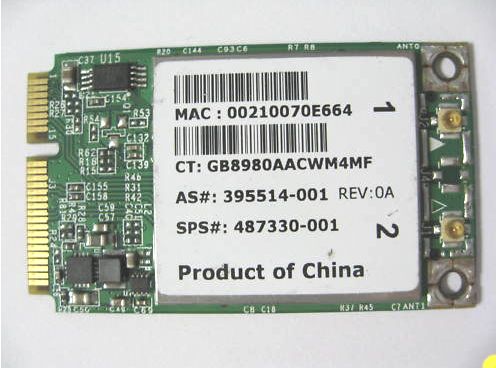
The right Broadcom card for AirDrop use.
Mac users with older MacBooks, iMacs or MacBook Pros can open them up (check ifixit.com for instructions) and replace their Apple branded card with the above Broadcom model to get AirDrop working. Here are the Mac owners who are SOL:
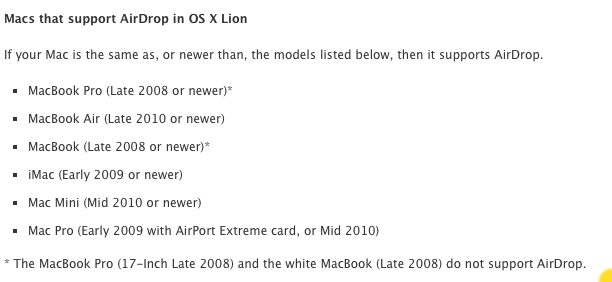
Then buy the PCI-e to MiniPCI-e adapter from Amazon (or pay the same and wait one month for it to arrive from the Far East) – another $20:
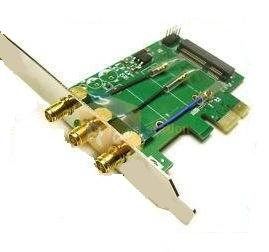
MiniPCI-e to PCI-e adapter.
Attach the two outside antennae to the card using fine nose pliers to snap the catches on, then insert the card in the adapter. The center antenna is not used. The assembly is installed in the Hackintosh (or Mac Pro for that matter) in any available short slot, the provided antennae are screwed on from outside the computer’s case and you have plug-and-play AirDrop functionality for $40. No drivers or hacking required. As I wrote years ago here, a Mac is nothing more than an assembly of PC parts, invariably overpriced and under-designed.
A related advantage of this card is that it supports the 5gHz spectrum for wi-fi as well as 2.4gHz. In some environments the latter is interference prone (lots of cordless phones and baby monitors use 2.4gHz). Try both with your Airport Exreme router, checking speeds using Speedtest.net.
Here’s System Profiler in Thomas’s HP10 showing the card installed and working:
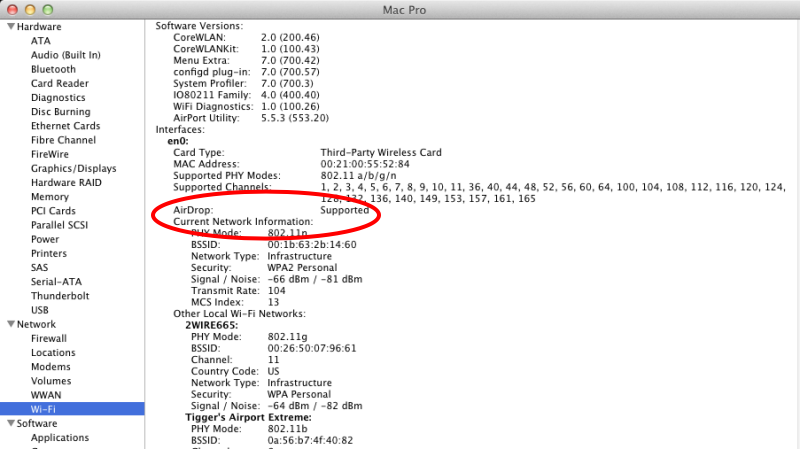
The Broadcom card installed in HP10.
Here’s the fan display showing use with the 5gHz spectrum – to get this display hold the Option key then click the fan in the Meu Bar:
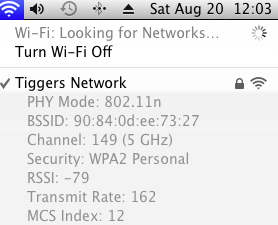
The antennae on the rear of the PCI-e wifi adapter card protrude from the rear of the computer case and can be rotated in all directions. Don’t just wiggle them and hope for the best. Use the Wi-Fi Diagnostics tool included with Lion, which you can find in System->Library->Core Service->WiFi Diagnostics. While watching the signal and noise traces, adjust the antennae until the space between them is at its greatest – here’s a trace:
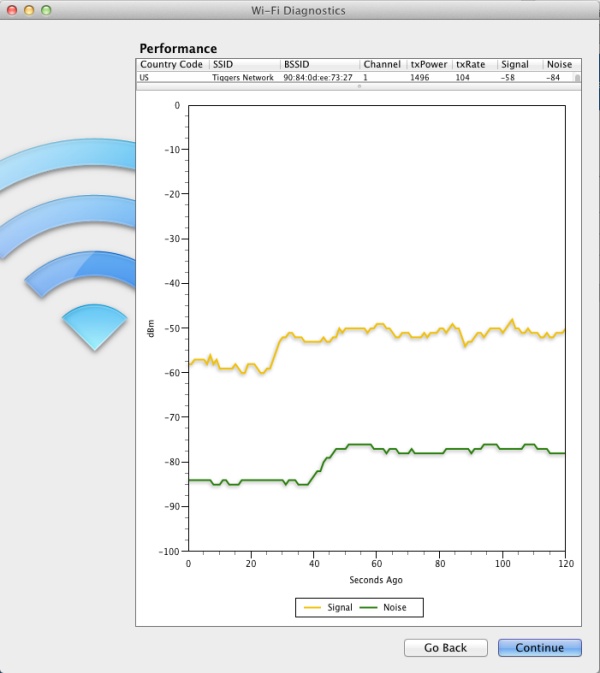
AirDrop on wired and older Intel iMacs:
For the older MacMini, the card is not easily changed as it integrates Bluetooth with broadband. However, this tip from MacOSXDaily works fine and has been successfully implemented on Thomas’s MacMini. It should work on any older Intel Mac whether wired or wireless, as long as the machines concerned are on the same network. It does not work on older PPC G3/4/5 iMacs – at least not on my old G4.
FU Steve comes through again. Thanks FU!
The DropCopy alternative:
If you have an early MBA (where the ‘wireless card’ is too integrated to permit replacement, or simply do not want to dismantle your Mac to replace the card, you can use DropCopy, the snag being that every Mac has to be running the app for file transfer to work. Still, what it lacks in elegance it gains in function on older machines. Why, DropCopy will even run on older G3/4/5 PPC Macs which Apple has now completely abandoned.